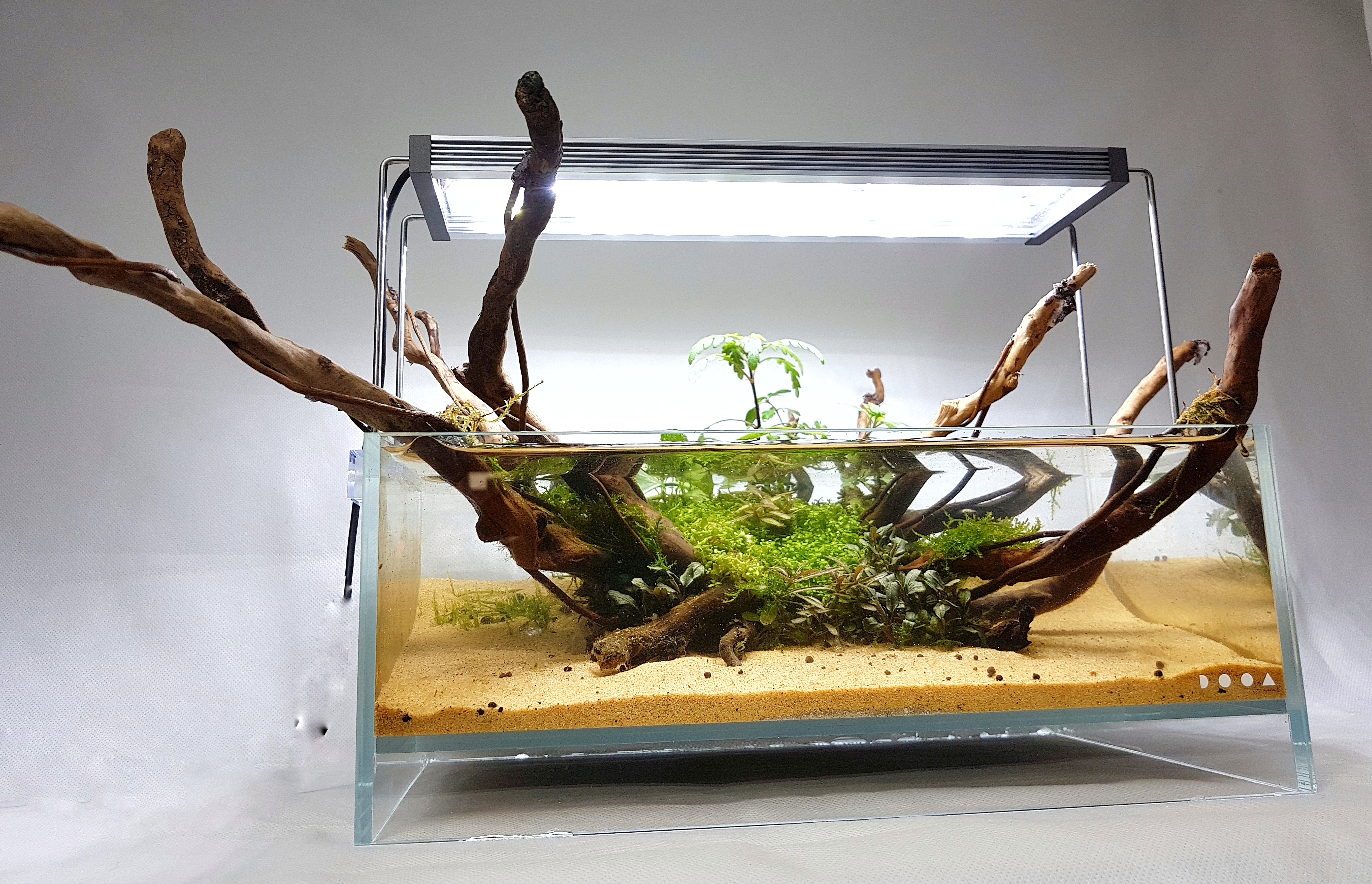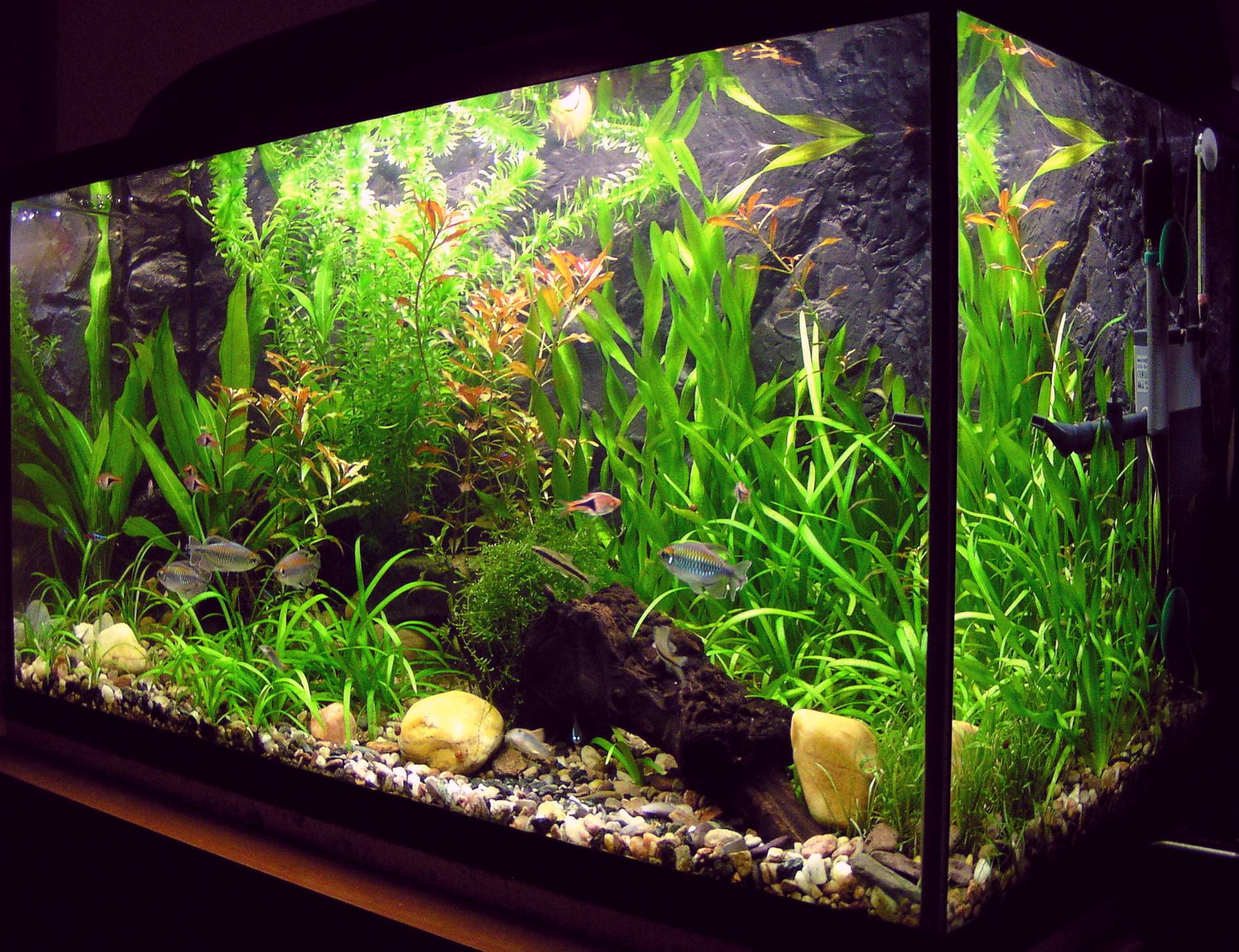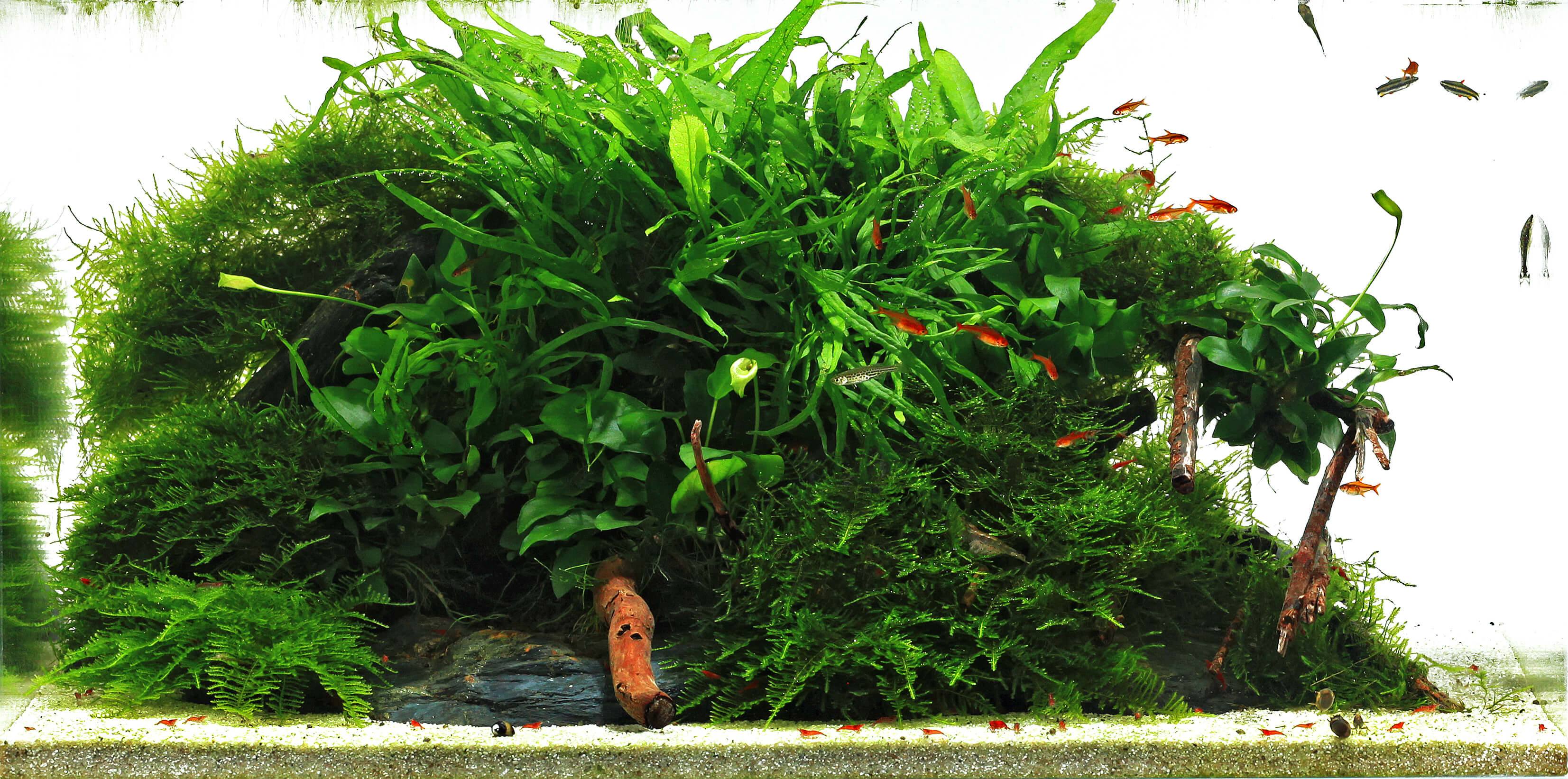Gravel and sand in the aquarium
Table of contents
- Sand and gravel in the aquarium
- Hardening gravel or sand in the aquarium
- Neutral gravel or sand in the aquarium
- Natural gravel and sand in the aquarium
- Colored gravel and colored sand in the aquarium
Sand and gravel in the aquarium
In the aquarium, substrate is popular at the bottom - here the plants can root, the fish and invertebrates can dig and burrow for food and even create living caves. There is a choice between aquarium soil, which actively influences the water values and has become increasingly popular in recent years in aquaristics and especially in aquascaping, and between the very classic aquarium gravel, which behaves passively in the water.
There is a rich selection of different colors and grain sizes for every taste in aquaristics - here in the online store you can buy completely different natural gravel and sand in different grain sizes and for shrimp and fish harmless colored substrate for plant aquariums, shrimp aquariums, fish aquariums and community aquariums.

Sand in the aquarium
Sand foraquaristics is characterized by a small grain size of up to 2 mm. Sand is especially important in the aquarium if you want to keep digging or burrowing fish such as armored catfish. Armored catfish often stick their whole head in the sand, pick up the fine grains with their mouth and flush them out again through their gills. This not only cleans the gills, the Corys also pick up the finest food that has accumulated in the sand. It is important here not to use sharp-edged sand, so that the armored catfish do not injure their sensitive gills!
Many aquarium snails, such as trumpet sn ails or piano snails, also love to piddle through the sand and eat fine food particles that have been deposited in the aquarium sand . Shrimp also like to piddle around on the sand grains, busily clearing them from side to side, also always looking for food.
Sand suitable for aquaristics is also just great to use for creating sand paths in the aquarium or different colored sand areas in a tank.
Various observations show that aquarium plants do not grow quite as well in sand as they do in coarser substrate - this may be due to the fact that water circulation is not possible quite as effectively in sand. The finer the grain, the more likely the substrate is to solidify. A troop of Malayan trumpet snails (TDS) can help prevent this.

Gravel in the aquarium
Aquarium gra vel has a grain size from 2 mm upwards. Due to the different grain sizes available in the store, you can very well cater to different aquarium sizes. Very coarse aquarium gravel of 8-10 mm grain size would perhaps look out of place in a nano aquarium, but in a very long tank it is just right.
Important to know: The coarser the gravel, the more likely it is that food particles and similar organic debris can settle into the substrate here and lead to fouling - a troop of Malayan trumpet snails (TDS) in combination with an aquarium mulm vacuum cleaner will do a good job of preventing fouling in the aquarium.
Aquarium plants tend to grow better in aquarium gravel than in very fine-grained sand because oxygen-rich water can circulate to the roots, which helps the plants absorb nutrients and can prevent rot.
At the same time, unlike aquarium soil, aquarium gravel does not contain any nutrients for aquarium plants. If you want to maintain particularly hungry root eaters such as Echinodorus in the aquarium, you should treat them to a substrate fertilizer or fertilizer balls. When setting up the aquarium, substrate fertilizer is applied as the first layer under the gravel, while fertilizer balls can be placed specifically in the root area of the aquarium plants.
Hardening gravel or sand in the aquarium
Aquarium gravel or aquarium sand are made of different materials. Many substrates for the aquarium behave water neutral, but there are also calcareous gravel and more rarely calcareous sand. Especially white gravel sometimes consists of marble quarry and thus of lime. In an aquarium with soft water, such gravel can strongly harden the water, therefore, for soft water aquariums should always be chosen lime-free gravel or sand.
In aquariums for animals from hard water such as Malawi aquariums, on the other hand, such gravel is even advantageous because it keeps the pH value in neutral range and reliably helps to prevent acidity in the aquarium.
Whether the aquarium gravel or aquarium sand hardens can be found out quite simply with an acid test: A little vinegar essence or a similar acid dropped on the dry substrate reveals whether it is calcareous. Then the surface literally starts to foam because the lime releases CO2 through the action of the acid.

Neutral gravel or sand in the aquarium
With an aquarium gravel or aquarium sand, which behaves water-neutral, one risks against it nothing at all - here the water values are changed neither upward nor downward, because this gravel or sand releases nothing to the water.
With a neutral gravel or sand you are therefore definitely on the safe side, it can be used very flexibly in both soft and hard water.
Natural gravel and natural sand in the aquarium
You can't go wrong with natural gravel or natural sand in the aquarium - there are hardening varieties here, but you can identify them quite easily - as explained above.
Natural gravel and natural sand are available either in one color, usually in rather muted colors from light beige to gray, reddish or brown to almost black, or in a mixture of the colors just mentioned. Especially a mixture of river sand or river gravel looks incredibly natural and varied in the aquarium!
Light sand, on the other hand, is often used in combination with a rather dark gravel for sand paths. Different grain sizes of aquarium gravel can also provide attractive contrasts and a nice variety in the aquarium.
Colored gravel and colored sand in the aquarium
The use of colored gravel and sand in the aquarium, on the other hand, is not entirely uncontroversial - a bright blue bottom may look attractive at first glance, but there are no natural biotopes with a blue bottom where fish would live in nature.
However, if you don't like it so colorful, you can also find colored gravel in muted colors in the aquarium store, for example, a pure black, which you have to look for a long time in natural aquarium substrates.
There is little to be said against a colorful design in the aquarium - the fish, shrimp and snails do not care much about the color of the bottom in the aquarium, it is in fact largely a matter of taste.
The only important thing is that the gravel or sand for the aquarium is colored with food coloring and coated with synthetic resin. Other, usually very cheap aquarium gravels may contain colors that are harmful to the animals and can release harmful substances over time in the aquarium.
Exception: With rasping catfish it is always better to use natural gravel, because their permanently scraping mouths can get even the highest quality coating of synthetic resin on the gravel grains.
Also important: colored gravel and colored sand must not be boiled or washed out too hot, the color layer can be damaged and become unstable. Before setting up the aquarium, colored gravel and colored sand should be washed thoroughly with cold or lukewarm water up to a maximum of 30 or 35 °C to remove abrasion of the colored layer caused by transport.
Then great effects can also be achieved with a high-quality colored gravel in the aquarium - color play or a play with different grain sizes provide a fascinating look. Who says that the substrate in the aquarium has to look boring?
